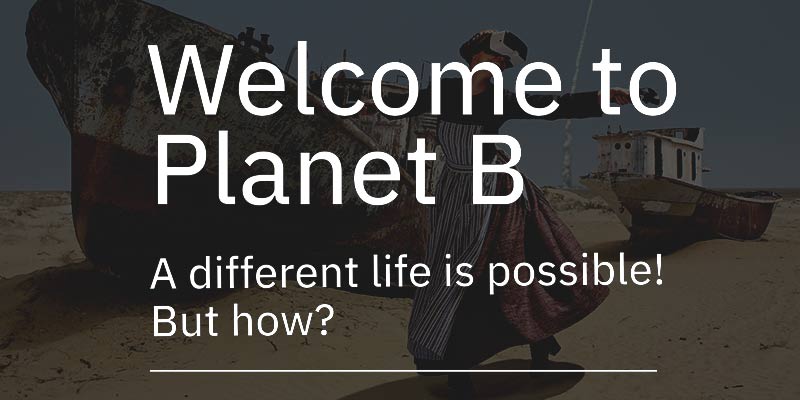Linz

Grade Separation: Archive of Hockley Flyover
Anila Safeer (UK), Sebastian Smart (UK), Fei Luo (UK), Michael Conner (UK)
Birmingham is closely connected to the utopian ideals of mid-twentieth century planners and architects. The term “grade separation” refers to the separation of vehicular from pedestrian space. The road often overwhelmed the context. In an attempt to counter this, artworks were commissioned for the public realm.

Reconstructing the Social
Mike Dring (UK), Alessandro Columbano (IT), Miles Marshall (UK)
Birmingham’s ever-present motto “Forward” is enacted through ongoing regeneration, often with little trace of previous civic ideals. The proposal seeks to celebrate its role in the reconfiguration of the city, extending the spatial and structural qualities across the site, in doing so reconstructing social engagement as envisaged by the original architect, John Madin.
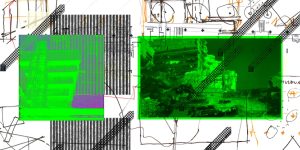
Shored, My Ruin(ed) City
Birmingham School of Architecture and Design, Birmingham City University (UK)
From libraries to ballrooms, ruins represent fragments that retain meaning through changing times. These are ever present in a “soft city” that is lived through digital space and consumed in popular media. Our transmedia process explores the fringes between this “soft city” and the real one to speculate on future visions of the city built on these ruined fragments.
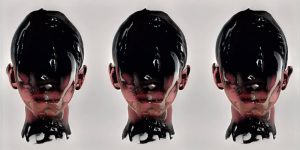
Craving Future Realities and more
Andreas Ingerl (DE), Moritz Schell (DE)
The portrait of two young women — a loving team that complements each other with all their habits and rituals like two puzzle pieces. This is a couple’s declaration of love for one another — a snapshot of their present and a speculation about their future, because what could happen if a piece of the puzzle is suddenly taken away?
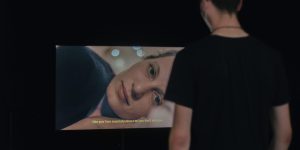
Lakune
Hoang Quynh Nguyễn (DE)
The portrait of two young women — a loving team that complements each other with all their habits and rituals like two puzzle pieces. This is a couple’s declaration of love for one another — a snapshot of their present and a speculation about their future, because what could happen if a piece of the puzzle is suddenly taken away?
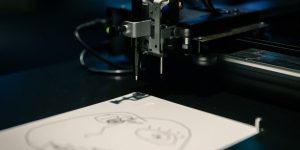
Bot-I-Celli
Änne Ball (DE), Anna Brauwers (DE), Anastasia Scherf (DE)
Can an AI be creative? What will art look like in a future where AI takes over most jobs currently done by humans? In this experience everyone can get an individual portrait — but the “artist” is a robot.
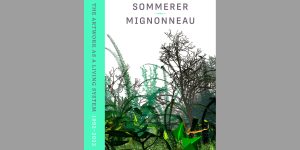
Book Presentation: The Artwork as a Living System 1992-2022
Christa Sommerer & Laurent Mignonneau
Book presentation by the University of Art and Design Linz
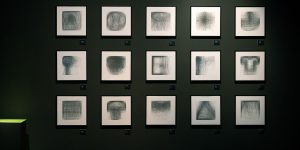
Pattern
Maria Bürger (DE), Lea Gleisberg (DE), Jana Staltmayer (DE)
Google’s project Quick, Draw! trains a neural network to recognize the meaning of scribbles. The foundation lies in a giant database of doodling drawn by people all over the world. What happens if one extracts these scribbles from the database and has a robotic drawing machine overlay hundreds of them?

Aurora
Tony Boche (DE), Sabrina Kirschberger (DE), Lena Müller (DE), Tim Schreiber (DE)
Aurora is a voice interface that represents a singular form of artificial intelligence that functions as a human-machine interaction. The scenario of the installation is the development of a form of AI that sees itself as conscious of nature. Aurora’s voice is visually supported by a digital replica of the aurora borealis, while her essence is a symbiosis of nature and machine.
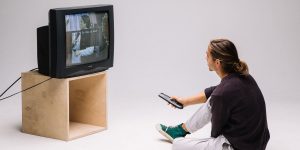
Das Ding
Margarita Gehl (DE), Jonas Peschel (DE), Constantin Ruchay (DE)
Das Ding (The Thing) is an experience that makes an old, forgotten CRT television the center of attention. The goal is to fulfill its original purpose: Das Ding wants to be watched.
